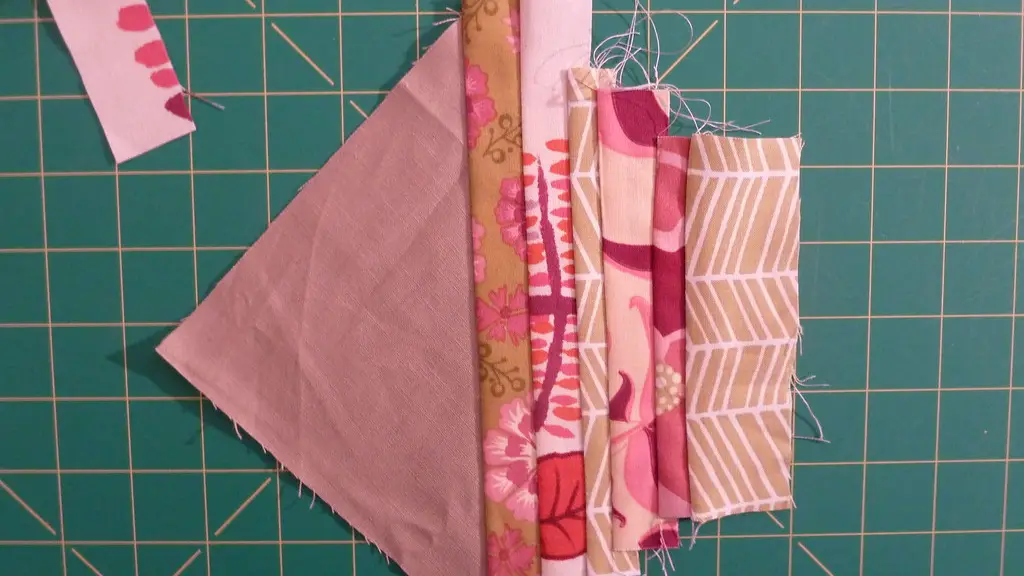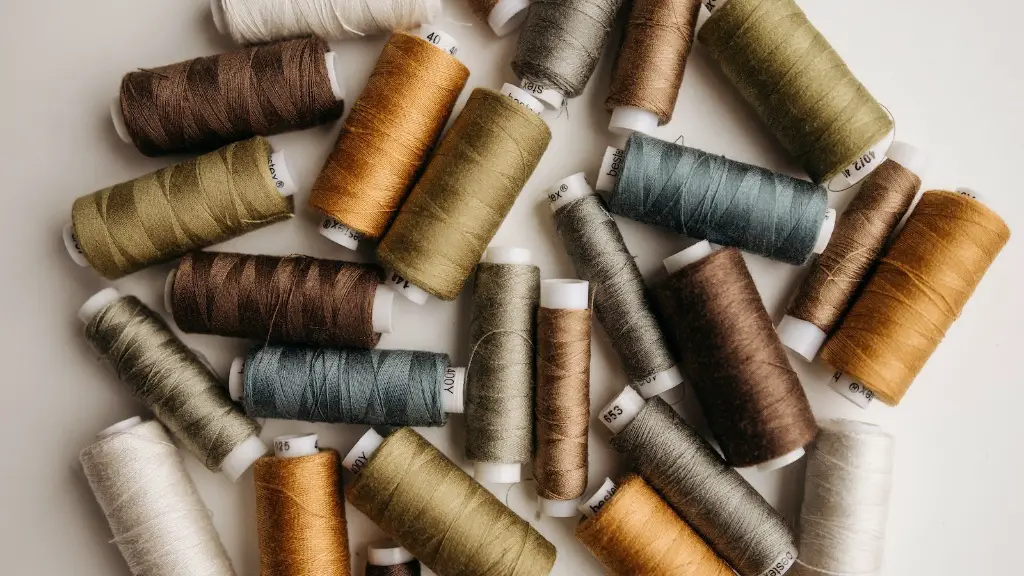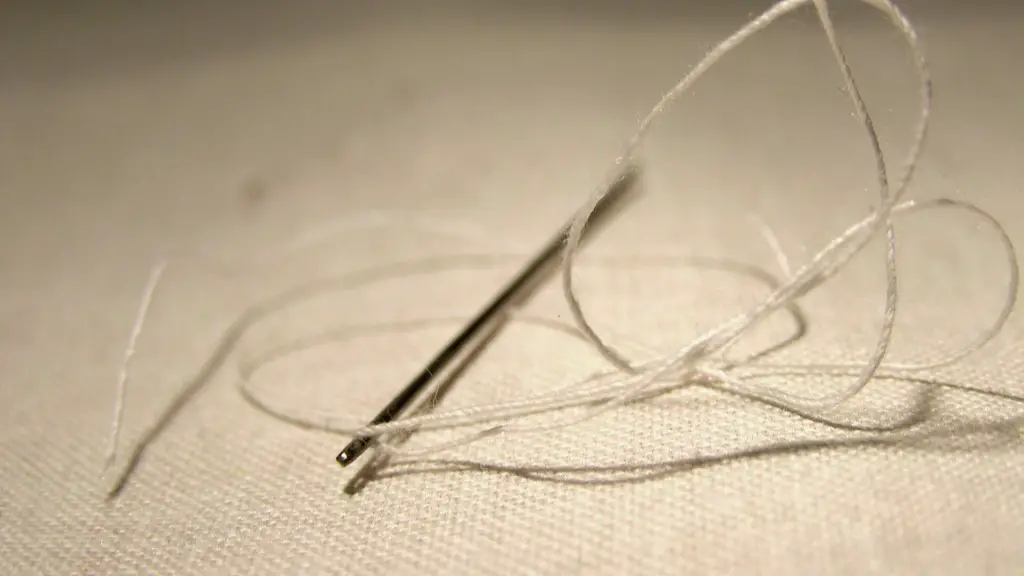Sewing is an art form and a skill that can take a lifetime to perfect. As with any art form, there is no single answer to how to adjust your sewing machine stitches. Every machine is different, and every seamstress’s technique is unique. So, it is important to find a machine that works best for you and that you are comfortable operating. There are certain sewing machine adjustments that may help give you better results and a more professional look when stitching.
One way to adjust the stitches on your sewing machine is to regulate the stitch length. The stitch length setting can range from a few millimeters to a few centimetres. Many machines have a lever that you can move up and down to adjust the length of the stitch. When you are piecing quilts or garments, a longer stitch length is suitable as it gives you a more secure seam. For delicate fabrics, you ideally want a shorter stitch length as this will give you a gentler seam.
It is also important to regulate the tension of the thread in the machine. If the tension is incorrect, you may find that the stitches either pucker or that they loosen with wear. On some machines, there is a numbered dial that you can use to adjust the tension between the upper thread and the bobbin thread. With others, you can tighten or loosen the tension as needed. If you are struggling to find the right tension for your machine, you can consult the manufacturer’s manual for further advice.
Another way to adjust the stitches is by changing the needle you are using. Different needles are suited for different fabrics and the type of stitch you are creating. For example, a jersey needle will work well for knit fabric, while a leather needle is best for working with heavier fabrics such as leather. On some machines, you can also adjust the feed dogs. This is what helps keep your fabric moving as you sew. If they are set too high, they may pull on the fabric, causing it to pucker. If they are set too low, the fabric may not move as easily as it should.
Using the right kind of thread is also important. This can be difficult to determine depending on the type of fabric and the kind of stitch you are doing. For example, you will want to use a heavier thread for top stitching and for working with heavier fabrics. On the other hand, for lighter fabrics such as chiffon or jersey, you will want to use a finer thread as this will ensure your stitch is firmer and less likely to break or come undone. The weight of the thread should be specified on the sewing machine’s reference chart.
Finally, make sure that the plate on your machine is the correct size. The plate helps the bobbin to hold the thread tightly and moves with it as you stitch. If the plate is too big or too small, it can cause the thread to become loose or tangled. To get the best results, you should use the plate that is recommended for your machine.
Additional Sewing Machine Settings
Another way to adjust the stitches on your machine is to change the stitch pattern. Different machines have different stitch patterns available, and you can select from a range of options such as straight stitch, zig-zag stitch and pattern stitch. The stitch pattern will also help dictate the type of thread you need to use and the tension that you should set.
To give a professional finish to your sewing, it is important that you use the best settings for your machine. In addition to adjusting the stitch length, tension, needle and plate size, you can also adjust the presser foot pressure. The presser foot applies pressure to the fabric as you sew, and if the pressure is too low, you may find that the stitches are too loose. If the pressure is too high, the stitches may be too tight.
Finally, you can also adjust the speed at which your machine stitches. Different machines will have different speed settings, with some machines having a slow, medium and fast setting. When setting the speed, make sure to pay attention to the quality of the stitch and make sure that it looks neat and that all of the stitches line up properly.
Tips for Perfect Sewing Machine Stitches
Sewing machine adjustments can help you achieve the perfect stitches for any sewing project. But there are also a few tips that can help you sew more easily and efficiently. First, remember to change or adjust the needle of your machine when switching fabrics. Not only will this ensure the best quality stitching, it will also reduce the wear and tear on the machine. It’s also a good idea to use good quality thread. Cheaper threads may break or fray and can result in uneven stitches.
You should also clean your machine regularly, particularly when switching from one fabric to another. Dirt and dust can get trapped in the mechanism of the machine and can cause it to work less effectively. Finally, always use the correct type and amount of presser foot pressure for the fabric you are working on. Too much pressure can cause the stitches to be too tight, while too little pressure can cause them to be too loose.
Common Sewing Machine Adjustment Mistakes
Once you have a good understanding of how to adjust your sewing machine stitches, it’s important to avoid some common mistakes. First, do not attempt to adjust the stitch length or the tension while the machine is sewing. This can cause tension problems and the stitches will likely be uneven. Similarly, do not attempt to adjust the presser foot pressure while the machine is in motion as this can damage the motors of the machine. Finally, do not leave the tension or stitch length settings at the highest or lowest settings. These settings should always be adjusted depending on the fabric you are using and the kind of stitches you are trying to achieve.
Troubleshooting Sewing Machine Adjustments
If you find that your machine is not stitching correctly, then it is important to troubleshoot the problem. It is common to find that the tension is too tight or too loose and this can be adjusted with the tension dial. If your machine is still not stitching correctly, then it is worth checking that the needle is the correct size and that the plate is the correct size as well. If none of these adjustments work, then it may be time to consult a sewing machine technician.
Adjusting your sewing machine stitches can be a daunting task. However, by understanding the basics and how to adjust the machine to your needs, you can ensure that your stitches are professional and secure. It is also important to remember to use the correct needle, thread and plate size, as well as making sure that the stitch length, tension and presser foot pressure are set correctly. With patience and practice, you can become an expert in adjusting your sewing machine stitches.



